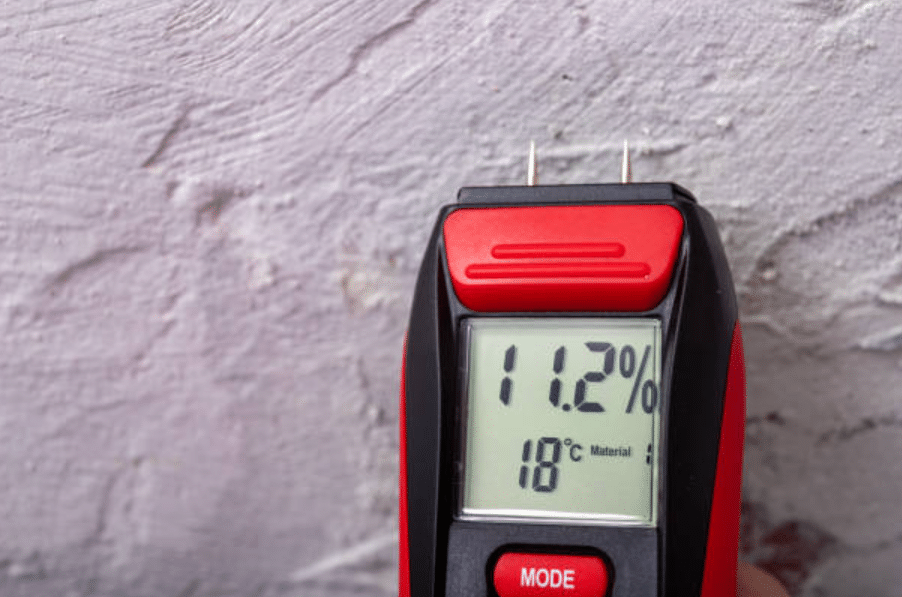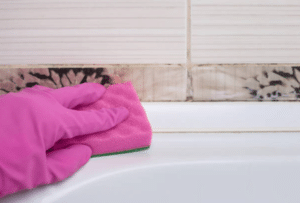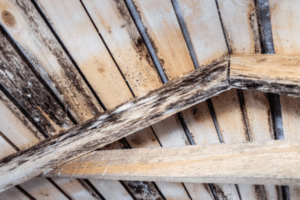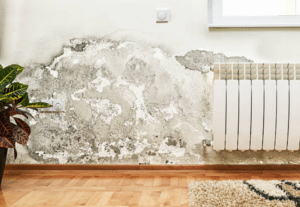As a resident of social housing, I am aware of the importance of mould control. Mould can damage property and have negative health impacts, so it is essential to take steps to prevent its growth.
I am pleased to see that a number of organisations have developed innovative solutions to enhance the cleanliness and health of social homes.
In this article we’ll look into the use of innovative solutions and technology to monitor humidity and temperature levels in real time.
We’ll also look on how landlords and property managers can proactively identify and address potential problems. You’ll also learn how tenants can have a role play in mould control solutions.
Key Takeaways:
- Mould control innovations in social housing is critical issue for maintenance of health and well being
- Innovative solutions are being implemented to enhance the cleanliness and health of UK social homes
- Customer service programs address condensation issues in social housing
- IoT technology enables real-time monitoring of humidity and temperature
- Energy-efficient measures like heat pumps and improved insulation help prevent mould growth
Statistics And Studies Of Innovative Solutions On Mould Control
Mould is a common problem in social housing in the UK, affecting an estimated 133,000 homes in England alone.
In a 2019-20 English Housing Survey found that serious condensation and mould problems were present in at least one room in 133,000 (3%) social sector homes.
The 2020 study by the National Housing Federation found that 43% of social housing tenants had reported having a problem with mould in their home in the past year.
A 2021 study by the University of Manchester found that children living in homes with mould were more likely to develop respiratory problems, such as asthma and bronchitis.
Social Housing Innovative Solutions for Mould Control
Mould is a common problem in social housing, where homes are often older and less well-maintained than in the private sector.
Mould can cause serious health problems, including respiratory problems, allergies, and asthma. It can also damage property, making it difficult to sell or rent.
There are a number of innovative solutions that can be used to control mould in social housing. These include:
Smart sensors
Smart sensors can be used to monitor humidity and temperature levels in social housing properties. This data can be used to identify properties that are at risk of mould growth, and to alert tenants and housing providers to potential problems.
Anti-mould coatings
Anti-mould coatings can be applied to walls and ceilings to prevent mould from growing. These coatings are particularly effective in areas that are prone to dampness, such as kitchens and bathrooms.
Positive input ventilation (PIV)
Positive input ventilation or PIV systems provide a constant supply of fresh air to social housing properties. This helps to reduce humidity levels and prevent mould growth.
Mould removal robots
Mould removal robots can be used to quickly and safely remove mould from social housing properties. These robots are particularly useful in hard-to-reach areas, such as behind cupboards and appliances.
These innovative solutions can help to reduce the incidence of mould in social housing, and to improve the health and well-being of tenants.
Benefits Of Innovative Mould Control Solutions
There are a number of benefits to using innovative mould control solutions in social housing, including:
Improved health and well-being of tenants: Mould exposure can cause a range of health problems, including respiratory problems, allergies, and asthma. By reducing mould growth, innovative solutions can help to improve the health and well-being of tenants.
Reduced costs: Mould can damage property, making it difficult to sell or rent. Innovative mould control solutions can help to reduce these costs, and to make social housing properties more attractive to tenants.
Increased tenant satisfaction: Tenants who live in mould-free homes are more likely to be satisfied with their accommodation. This can lead to improved tenant retention and reduced turnover costs.
How To Implement Innovative Mould Control Solutions
There are a number of ways to implement innovative mould control solutions in social housing. Housing providers can:
Invest in smart sensors and other monitoring equipment: This will help to identify properties that are at risk of mould growth, and to alert tenants and housing providers to potential problems.
Apply anti-mould coatings to walls and ceilings: This will help to prevent mould from growing in areas that are prone to dampness.
Install PIV systems: PIV systems provide a constant supply of fresh air to social housing properties, which helps to reduce humidity levels and prevent mould growth.
Invest in mould removal robots: Mould removal robots can be used to quickly and safely remove mould from social housing properties, particularly in hard-to-reach areas.
Housing providers can also work with tenants to raise awareness of mould and to provide advice on how to prevent it. For example, housing providers can provide tenants with information on how to ventilate their homes properly and how to identify and deal with mould early on.
By implementing innovative mould control solutions, housing providers can help to create a healthier and more sustainable environment for social housing tenants.
Moisture Management Techniques for Mould Control
Proper moisture management is key to controlling mould growth in social housing, and implementing effective techniques can significantly reduce the risk of mould-related problems. One innovative solution is the customer service program developed by Airtech Environmental Systems and Coastline Housing.
This program offers responsive inspections, recommendations, installation of fan equipment, and education for tenants, specifically addressing condensation issues in social housing. By providing tenants with the necessary tools and knowledge, this program aims to empower them to take control of moisture levels in their homes.
Another approach to moisture management is the use of IoT (Internet of Things) technology. Real-time data on humidity and temperature can be collected using sensors and devices installed within the properties.
This data allows for proactive monitoring and assessment, enabling early intervention to prevent mould growth. IoT Solutions Group has developed innovative monitoring sensors that can detect changes in air quality and provide timely alerts to users or landlords.
By utilising such technology, property managers can stay informed and take prompt action to address any potential moisture issues.
Implementing energy-efficient measures also plays a crucial role in moisture management. Heat pumps and improved insulation can effectively reduce the risk of condensation and mould growth in social housing.
These sustainable solutions not only promote a healthier living environment but also help to minimise energy consumption and lower utility costs for both tenants and landlords. By investing in energy-efficient upgrades, housing providers can ensure long-term benefits for both the residents and the environment.
| Mould Prevention Techniques | Benefits |
|---|---|
| Proper ventilation | Reduces moisture buildup and improves indoor air quality. |
| Regular cleaning | Prevents the accumulation of mould spores and removes existing mould. |
| Prompt reporting of structural issues | Enables landlords to address and fix problems that may contribute to moisture buildup. |
Effective moisture management is essential for controlling mould growth in social housing. Through programs that offer inspections, recommendations, and education, as well as the utilisation of IoT technology and energy-efficient measures, innovative solutions are being implemented to combat mould-related problems.
Additionally, tenants can contribute to mould prevention by ventilating their homes, practicing regular cleaning, and promptly reporting any structural issues. By combining education, technology, and improved maintenance practices, social housing providers can create healthier living spaces for their residents.
Effective Mould Removal Strategies
When it comes to mould removal in social housing, it is essential to seek the services of professionals who specialise in safe and effective mould removal.
Attempting to remove mould without proper expertise can pose health risks and may not fully eliminate the problem. One trusted and experienced mould specialist provider is AirFresh Mould Removal London.
AirFresh Mould Removal London offers a comprehensive mould cleaning service that ensures the complete removal of mould and prevents its return.
Their team of mould experts utilises advanced techniques and equipment to effectively eliminate mould from social housing units.
They understand the importance of creating a safe and healthy living environment for residents and prioritise delivering high-quality results.
At AirFresh Mould Removal London, we pride ourselves on our expertise in mould removal. Our trained mould specialists employ industry-leading techniques to safely and effectively eliminate mould from social housing units. We are committed to providing exceptional customer service and ensuring the well-being of residents. Contact us for professional mould cleaning services in London and let us help you maintain a mould-free home.
By hiring professionals like AirFresh Mould Removal London, social housing landlords can ensure that mould issues are addressed promptly and efficiently.
This not only improves the living conditions for residents but also helps prevent the spread of mould to other parts of the building.
Professional mould removal services are equipped with the knowledge and tools to identify the root causes of mould growth and implement effective solutions to prevent its recurrence.
| Mould Removal Service Benefits |
|---|
| Safe and effective removal of mould |
| Expertise in identifying and addressing underlying causes of mould growth |
| Prevention of mould recurrence |
| Prompt and efficient service |
When it comes to mould removal in social housing, it is crucial to prioritise the health and well-being of residents. By enlisting the services of professionals like AirFresh Mould Removal London, landlords can ensure a safe and mould-free living environment for their tenants.
Residential Mould Control Strategies for Tenants
Tenants play a crucial role in mould control in social housing, and implementing residential mould control strategies can contribute to maintaining a mould-free living environment.
By taking simple proactive measures, you can minimise the risk of mould growth and ensure a healthier home for you and your family.
Ventilation
Proper ventilation is essential to prevent moisture buildup, which can lead to mould growth. Open windows regularly to improve air circulation and use extractor fans in bathrooms and kitchens to remove excess moisture.
Regular Cleaning
Keeping your home clean and dry is vital in mould prevention. Regularly clean surfaces, especially in areas prone to dampness, such as bathrooms and kitchens. Be sure to dry any wet or damp items promptly to prevent moisture from lingering.
Control Humidity
Maintaining optimal humidity levels is key to mould control. Use dehumidifiers in areas with high humidity, such as basements or laundry rooms. Be mindful of drying clothes indoors, as it can increase moisture levels. If possible, dry them outside or in well-ventilated areas.
Report Structural Issues
Promptly report any structural issues, such as leaks or water damage, to your landlord or property management. Addressing these issues early can prevent further moisture problems and potential mould growth.
Furthermore, technology advancements provide additional tools to assist in mould control efforts. Proactive monitoring sensors, developed by companies like IoT Solutions Group, can detect changes in air quality. These sensors can alert you or your landlord to potential issues, allowing for immediate action to mitigate the risk of mould growth.
By implementing these residential mould control strategies and utilising available resources, you can actively contribute to maintaining a mould-free living environment in social housing. Remember, prevention is key, and your efforts can make a significant difference in ensuring a healthy and comfortable home for yourself and your community.
Conclusion
In conclusion, innovative mould control solutions are essential for ensuring the cleanliness and health of social housing in the United Kingdom, and proactive measures should be taken to prevent and manage mould growth effectively.
Implementing energy-efficient measures, such as heat pumps and improved insulation, can also help reduce the conditions conducive to mould growth in social housing.
Proactive monitoring sensors can likewise contribute to mould control by detecting changes in air quality and alerting users or landlords to potential issues.
By combining education, technological innovation, and improved property maintenance, the cleanliness and health of social housing can be effectively safeguarded against mould growth.
FAQ
Q: What are some innovative solutions for mould control in social housing?
A: Organisations have developed customer service programs that address condensation issues in social housing through responsive inspections, recommendations, installation of fan equipment, and tenant education. Another approach is the use of IoT technology to gather real-time data on humidity and temperature for proactive monitoring and assessment of properties.
Q: How can energy-efficient measures help reduce the risk of mould growth in social housing?
A: Implementing energy-efficient measures, such as heat pumps and improved insulation, can help maintain a stable indoor environment and reduce the likelihood of excessive moisture and condensation, which are conducive to mould growth.
Q: What role can tenants play in preventing mould in social housing?
A: Tenants can assist in preventing mould by properly ventilating their homes and promptly reporting any structural issues, such as leaks or dampness, to their landlords. They should also follow proper cleaning and maintenance practices to minimise moisture accumulation.
Q: Are there any proactive monitoring solutions available for detecting mould in social housing?
A: Yes, proactive monitoring sensors, such as those developed by IoT Solutions Group, can detect changes in air quality and alert users or landlords to potential issues. These sensors can help identify conditions that may promote mould growth, allowing for prompt intervention.
Q: How can education contribute to mould control in social housing?
A: Education plays a vital role in mould control as it helps tenants and landlords understand the importance of moisture management, proper ventilation, and early detection of mould. By raising awareness and providing guidance, education can empower individuals to take necessary preventive measures.
There are a number of innovative solutions for mould control in social housing.
However, it is important to note that mould can be dangerous to remove yourself, especially if it is growing on porous surfaces such as plasterboard or carpet.
If you have mould in your social housing property, it is always best to call a professional mould removal company.
If you have mould in your social housing property, please call us today on 0203 130 4068.




